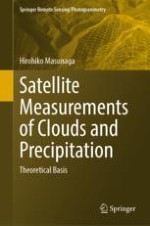2022 | OriginalPaper | Buchkapitel
3. Satellite Orbit and Scan
verfasst von : Hirohiko Masunaga
Erschienen in: Satellite Measurements of Clouds and Precipitation
Verlag: Springer Nature Singapore
Aktivieren Sie unsere intelligente Suche, um passende Fachinhalte oder Patente zu finden.
Wählen Sie Textabschnitte aus um mit Künstlicher Intelligenz passenden Patente zu finden. powered by
Markieren Sie Textabschnitte, um KI-gestützt weitere passende Inhalte zu finden. powered by
